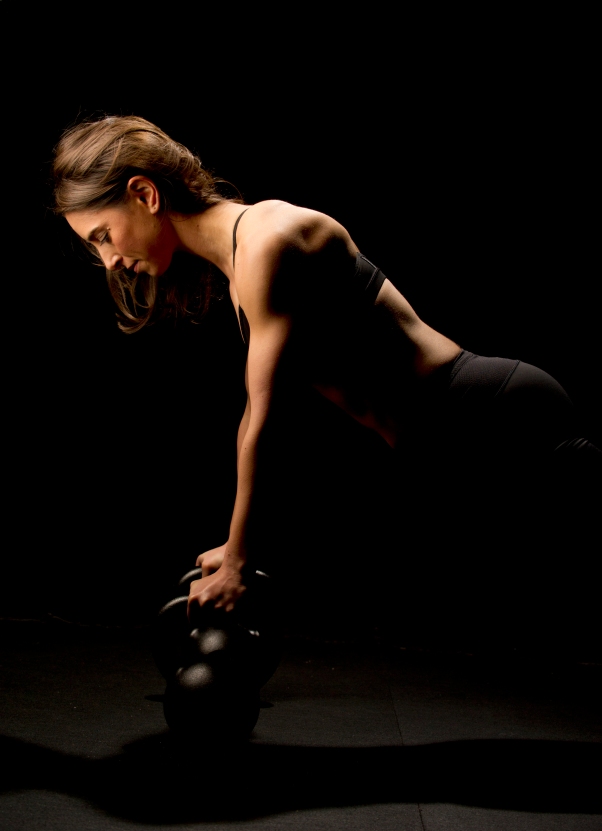Oops, one day late. My bad.
In part I of Confessions of an Introverted Strength Coach I discussed some of the misconceptions of what it actually means to be an introvert and then dissected some of the characteristics separating introverts from extroverts.
I also linked to a simple test you can take to figure out where on the spectrum you lie (Note: no one is 100% either/or), as well as shared some personal perspective throughout my own life on how I’ve learned to embrace and accept my introversion.
I.e., I’ve hugged myself a lot.
You can catch up HERE in case you missed it. Don’t worry, I’ll wait.
To say I was thrilled with the response part one received would be an understatement.
I knew it would be a hot button topic and strike a chord with a lot of people, but I had no idea so many would go out of their way to say “thank you,” say how much they could relate, or be willing to name their first born after me.
Okay, that last part is a slight exaggeration.
It’s with that I first want to first say THANK YOU to everyone who responded and for all the kind words. I guess being in a relationship with a psychologist for five years – outside of learning some nifty Jedi-mind tricks (and yes, I just used the word nifty in a sentence) – has spoiled me into assuming that most people had a general grasp on the topic.
I’m elated everyone is now more aware that being an introvert isn’t a disease and that it doesn’t mean you’re weird, socially inept, or a recluse. It just means you have an affinity for using your inside voice, books, and, I don’t know, maybe spending an evening watching old re-runs of Party of Five episodes by yourself.
Oh, and cats……;o)

Just to save face, however, and to be clear: all of this isn’t to say that being an extrovert is bad or that extroverted people are horrible human beings.
I know many delightful, enjoyable, and overly pleasant people who are extroverts (ahem, my girlfriend is one). Many of my good friends and colleagues are extroverts. Heck, my own brother is the KING of extroverts.
It’s not as if I’m trying to instigate a 90’s East coast-West coast hop-hop battle where introverts represent Biggie on one side of the fence and extroverts represent 2Pac on the other.
We can all get along here. There’s no need for tension or judgement or mix-tapes calling one another bad names.
On the contrary all I want to convey is that the two sides are just…….different.
More to the point, that being an introvert, especially in world that seemingly rewards and encourages the polar opposite, may take some minor tweaking on your part to thrive.
This is especially true if you happen to be a coach or personal trainer for a living.
I played baseball all through high-school and was lucky enough to earn an athletic scholarship to play in college.
I was a pitcher and between high-school and college combined I had a variety of coaches who challenged me both physically and mentally.
My high-school coach was a very level headed and calm coach. I don’t think I ever saw him lose his temper in practice or during a game. Sure, he’d get fired up, like any coach would, if someone missed their cut-off man or missed the sign to bunt. But all in all, he was a coach who kept his cool at all times. And I responded very well to that because it matched my demeanor.
Similarly, I rarely lost my shit on the mound. Whether I was pitching a complete game 2-hitter or I was taken out in the 3rd inning, I generally kept the same levelheadedness at all times. I never liked to show emotion or demonstrate to the other team I was flustered. I was like Liam Neeson’s character in Taken, except without the hand-to-hand combat skills and not remotely as badass.
My JUCO (Junior College) coach was a bit different. He was the type of coach who was intense, expected a lot from his players, and didn’t refrain from letting you know when you did something wrong. But he coached, and it just made it all the more sweet when he praised you for doing something right.
He was an amazing coach, and I appreciated the fact he was hard on us at times. He definitely rubbed some players the wrong way – some ended up quitting the team – but I think some guys just didn’t like being held accountable and were used to being coddled.
When I eventually transferred to Mercyhurst College (now Mercyhurst University), I had the misfortune of being recruited by one coach, only to see him leave once I arrived, and then go through two coaches in two separate years my Junior and Senior seasons.
My senior year coach was a nightmare. He was from the south and as hotheaded as they come. He’d get in player’s faces during practice, he’d get in their faces on the team bus, and he’d almost always get in our faces during games. It got to the point where we’d start betting one another what the over-under was for when he’d get kicked out of a game.
He loooooooved guys who showed emotion. I wasn’t one of those guys.
I remember one instance where I gave up three consecutive hits to the first three batters of a game. He called time out and charged out to the mound to tell me, in no uncertain terms, to “get my ass into the game” and that I better “start giving a shit.”
You know, as if I wanted to give up three straight hits to start the game.
For whatever reason he always took my demeanor on the mound as being cavalier and that I should get more fired up.
Anyways, on occasion he’d come out and do his song and dance, I’d take it in stride, and then I’d just continue doing what I always did.
Long story short: I ended up pitching a complete game where we ended up winning 5-2. Whatevs. No big deal.
Funnily enough a few of my old teammates sent me THIS story on coach Norwood which was featured on Deadspin.com a few months ago.

Give it a listen. That’s what I had to deal with.
NOTE: then again, anyone with the same name as an infamous field goal kicker who lost a Super Bowl would probably have a case for being an assclown.
Needless to say he was one of those RAH-RAH coaches. Admittedly he was an outlier and took the RAH-RAH to a whole nother “douchey to the douchiest” degree, but it speaks to the topic at hand.
I am not a RAH-RAH coach
I think most introverts would agree that they aren’t either. This isn’t to say that we never get animated or fired up for our athletes, but those instances tend to be few and far between.
In truth ‘m much more animated at the gym than I am at other social events. Being in the gym is what’s comfortable for me and is where I feel at home. Also, it doesn’t hurt that if there’s ever a place where making noise is warranted and par for the course…..it’s the gym.
Still, while exceptions are made whenever a good EDM (Electrical Dance Music) track comes on the stereo, I think if most people watched me coach and saw what my animated looked like, they’d think I was drinking tea, or at most, playing a friendly game of Jeopardy.
It may be a bit naive on my part to say this, but I truly feel, as one person put so succinctly in the comments section on my Facebook page, “if you put off the laid back ‘I’m just here to make you better not break you down to rebuild you’ vibe your clients feel comfortable quicker. You get to know them and they reveal more about themselves, what they like, what makes them tick, which in the long run enables you to motivate them for the longer haul.”
My coaching style definitely feeds into this mindset.
I often chuckle to myself when I’m watching someone perform a lift and after their set they look up at me like a sad puppy expecting me to berate them or go off on some tirade about neutral spines, tucked chins, knees not being pushed out, or WHY THE HELL DID THEY MAKE ANOTHER TRANSFORMERS MOVIE??? DID YOU SEE THAT LAST PIECE OF GARBAGE???? AHHHHHHHHHHH!!!!!!
*runs through brick wall*

In fact what usually happens is I give a nod of approval and say something like, “naw man, you’re cool. Looked good!”
I always like to give feedback, but my introverted tendencies sometimes get the best of me. Athletes or clients will occasionally take my silence as me thinking they’re doing something wrong or that they’re past the point of help. This couldn’t be further from the truth,
Something that has helped me (and is something I “stole” from fellow CP coach Greg Robins) is to give a new athlete or client a bit of a heads up. I’ll preface their set by saying something along the lines of, “I’m just going to be a fly on the wall and let you go. If I ever feel you’re going cause any harm or hurt yourself, I’ll let you know and stop you. Don’t take my silence as something bad or that I’m not paying attention.”
I’m paying attention. I’m paying attention like no one’s business!
Sometimes as coaches and trainers we get too carried away with OVER-coaching, throwing out cues and feedback at a lightning pace. It can get overwhelming for some, especially if you’re working with an introvert.
I like to allow (some) athletes to feel they’re way through an exercise.
When I do need to give feedback I break it down like this:
1. Show correct technique and what I’d like them to do.
2. Show what they did wrong.
3. Show them, again, correct technique and what I’d like them to do.
I may give a “WTF was that look” from time to time, but for the most part there are no theatrics, no yelling, and no tossing of chairs.
Here’s the Part You Skipped to Anyways (Tips for the Introverted Coach)
1. Set-up recharge blocks between clients so you don’t murder a client or co-worker.
This is something I lived by when I worked in the commercial gym setting. As coaches and trainers we work when everyone else doesn’t, and our schedules can be pretty sporadic to say the least.
I always had colleagues who would schedule clients from 7 AM all the way through the afternoon, and I never understood how they could do it. Most would burn out pretty quickly doing that long-term.
Personally I’d always “stagger” my schedule and purposely place gaps throughout so I could allow for some down time between clients.
Sometimes I’d use the time to get my workout in. When I was a trainer at Sportsclub LA in downtown Boston I’d use my re-charge time to hang out in the lounge and catch up on some reading or write. Sometimes I’d just go for a walk across the street in Boston Common. And sometimes I’d walk over to the adjacent movie theater and catch an afternoon flick.
Let me tell you, those re-charge periods were GOLD in my eyes. So whether you’d prefer to take that time for power nap or to read or to play Candy Crush….I can’t recommend it enough.
2. Be You
Don’t be something you’re not. Don’t feel as if you have to cater to what society tells you you should be. If you want to wear white after Labor Day then do it, dammit!
Too, if you’re not a RAH-RAH coach, then don’t be one
That being said, as an introvert that doesn’t mean you shouldn’t be willing to adapt to some degree. CP coach, Chris Howard, gave an excellent presentation at last year’s Cressey Performance Fall Seminar on this very topic. He noted that two of the more prominent challenges of the introvert coach is that 1) he or she may seem unapproachable and 2) he or she may not give as much feedback or encouragement.
To point #1: Smile! Was that so hard?
To point #2: Read above where I discuss how I cue new athletes and clients. See!! I knew you skipped to this section!!
3. But to Add to That
Whether you’re an introvert or extrovert I feel utilizing more EXTERNAL cuing when coaching new movements and exercises is more valuable than INTERNAL cues.
Internal cues focus within the body or a specific movement, while external cues focus on things outside of the body and/or on an effect or outcome of a movement
Using the deadlift as an example:
Internal Cues: flex the hip; extend at the top; squeeze your abs; arch your back; squeeze your glutes; rotate pelvis upward; flatten your back.
You might as well be speaking Elvish.
External Cues: Rope around waist pulling you backward (helps with people pushing their hips back); tap the wall with your butt (same thing); plates should rattle at the top (gets people to explode with their hips); pretend you’re getting punched in the stomach (instead of “squeeze your abs”); show me the logo of your shirt (helps with neutral spine and chest up); push away from the floor (gets people to put force into the ground).
Try it. I bet you’ll be surprised with how much more smoothly things go.
In addition, learning how to coach an INTROVERTED client is important too. Stealing from Chris Howard (again). When coaching an introvert it will help to:
– Be patient
– Check in regularly (they won’t be as verbal and won’t demand your attention)
– They generally won’t ask questions, so you should ask them!
– Let them observe first.
I’ll Shut Up Now
For a so-called introvert I sure had a lot to say! You deserve some kind of gold star for making it this far.
Hopefully this was somewhat helpful, and helped shed some light on the topic.
By all means I’d love to hear YOUR thoughts, insights, or any advice you’d have to offer. But remember: use your inside voice….;o)





















